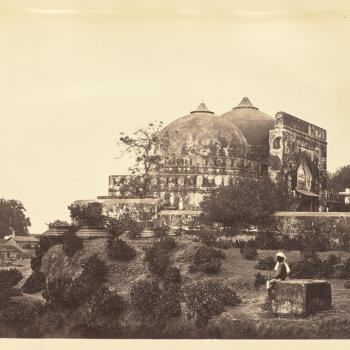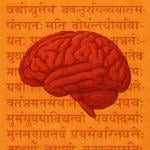River length (including Bangladesh): 2525 km
Basin area in India: 861,000 sq km
Indian population in basin: 329 million (To compare, population of US is 327 million)
States in basin: Uttarakhand, Uttar Pradesh, Bihar, Jharkhand, West Bengal
The word “Ganga” literally means, “to flow”.
On the banks of the River Sone, one of Ganga’s tributaries, archaeologists found a 11,000-year old triangular stone, thought to be one of the oldest representations of a yantra, indicating worship of Shakti or the goddess.
The French philosopher Francis M. Voltaire was so awed by Ganga that he said, “I am convinced that everything has come down to us from the banks of Ganga – astronomy, astrology, spiritualism, etc. It is very important to note that some 2500 years ago at the least, Pythagoras went from Samos to Ganga to learn geometry.” (translated from French)
Volume of Ganga Water Entering India
These flows are not just for Ganga, but for the whole basin, which includes the tributaries. The annual flow of Ganga river basin from China to Nepal is 12 cubic km. All rivers in Nepal drain into Ganga river with an annual flow of 210 cu. km into India. The annual flow of Ganga basin from India to Bangladesh is 525 cu km.
Glacial and snow melt contributes about 4-6% of the total water flow of Ganga.
Medicinal/Special Qualities of Ganga Water
Ganga jal or Ganga’s water was regarded as amrit, the nectar of the gods, in the past. Akbar the Mughal emperor always carried a supply with him. The British East India Company used only Ganga water for its sailors during the three-month journey back to England, because it stayed “sweet and fresh” throughout. This is now known to be due to the presence of special viruses that infect and destroy bacteria, but are harmless to human cells.
In 1896, a British bacteriologist was studying cholera outbreaks in Ganga basin. People disposed of infected corpses in Ganga. The river should have transformed into a poisonous spring of the disease, with an epidemic sweeping through towns and villages down the valley. He had seen this across Europe as water supplies became infected with the bacteria. But in Ganga, the disease remained relatively tame. The new outbreaks simmered and then died out.
He assumed that Ganga water destroys cholera microbes. In an experiment, he found Ganga water destroys cholera bacterium within three hours. He also simultaneously dropped the bacterium in distilled water and found that it survived for more than 48 hours. However if Ganga water was boiled in the open, it did not have the same effect. But if boiled under a closed cover, it retained its bacterium killing properties.
In 1916, a French-Canadian microbiologist was working at the Institut Pasteur in Paris, when he discovered bacteriophages. These are viruses that infect bacteria and destroy them. They are even found in the human digestive, reproductive and respiratory tract. Bacteriophage means devourer of bacteria. Bacteriophages have evolved to act against specific strains of bacteria, and so are not infectious to human cells. For example, phages that infect the cholera bacterium can only infect the cholera bacterium and no other bacteria.
Long ignored by scientists, bacteriophages are now being considered as new treatment options for deadly diseases, that could save hundreds of millions of lives. Western medicine first encountered these in the 1896 experiment on Ganga water.
Though all rivers contain bacteriophages, Ganga is thought to contain large numbers of them. A recent study found that it has viruses that destroy bacteria causing influenza, cholera, urinary tract infection, pneumonia and more. Many totally new kinds of viruses have been detected. Studies have only begun to scratch the surface.
These qualities are even found at Gomukh. A study surmised that the bacteriophages trapped thousands of years ago in the Himalayan glacier might be getting released gradually with the melting permafrost, thereby making a seed source of bacteriophage.
A University of Roorkee study found that Ganga water decomposes organic waste material 15 to 25 times faster than other rivers in the world.
Ganga Sediment
Ganga carries the highest silt load of any river in the world and the deposition of this material in the delta region results in the largest river delta in the world formed by Ganga and Brahmaputra together. The delta has an area of 59,000 square kilometers.
The sediment is also deposited on the sea floor in a “submarine fan” that is 3000 km long, 1430 km wide with a maximum thickness of 16.5 km.













